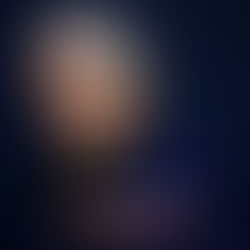David Serero plays – and sings – a nice-guy Sephardi Shylock.
- Steve Linde from The Jerusalem Post
- Jul 16, 2015
- 3 min read
Updated: Aug 27, 2023

David Serero smiles when he describes his new role as Shylock in the musical Merchant of Venice, which premiered in New York last week.
"There are many ways to play Shylock," he says.
"The last person to play Shylock in New York was Al Pacino, but all the biggest Jewish actors, like Jacob Adler, played Shylock as a villain. Shylock is the bad guy.
Even today, in the finance world, when we call someone a 'shylock,' we mean he's a bad guy who will kill for money. "The way I do Shylock is completely different. I portray him as a nice guy who wants to make peace with the merchant with Antonio.
He says, 'I would be your friend and have your love.
Forget the shame that you have stained me with.' As a Shakespeare expert once told me, Shylock is the most loyal guy in the play. And I show this in my version." Serero's production at the Center for Jewish History, sold out on its opening night, is a modern-English version of the Shakespearean play interspersed with Sephardi music.
Serero, 33, who was born in Paris to Moroccan Jewish parents but now lives in New York, already has an international reputation as a baritone singer and actor after performing in concerts and on television worldwide.
Asked how this production came about, he says: "The Merchant of Venice, particularly the part of Shylock, was always my favorite
Then, I became friends with Jason Guberman, the director of the American Sephardi Federation in New York, hosted by the Center for Jewish History. "I asked him how he felt about producing The Merchant of Venice in a Sephardi style because Shylock and the Jews of Italy were Sephardi, and said we'd add some Jewish music from the era, the late 16th century, to the play.
He immediately said, 'Yes, let's do it.' So I put the production together with amazing artists who could also sing in Ladino, and it was my pleasure to present this production." Serero rejects the notion that the play is anti-Semitic, insisting that its message is as relevant today as ever.
"Many people say that The Merchant of Venice is an anti-Semitic play, but I believe it is not because of that beautiful monologue by Shylock in which I say with tears, 'Has not a Jew's eyes? Has not a Jew hand, organs, dimensions, senses, affections, passions?' What better monologue can you have against anti-Semitism? "I have changed some of the language for the modern audience, but I think it speaks to today's audience 200 percent.
That's why I close by saying to the audience, 'That play was written 400 years ago, you know, and do you think it's still relevant?' And the audience shouts, 'Yes!' And I say, 'What the hell have we learned over the last 400 years?' Also, this play is about understanding others, not only Jews but also blacks, Christians, gays, and others persecuted in some countries. For me, The Merchant of Venice is so beautiful.
" Serero has added music to the play, including his superb rendition of "Adio Kerida." He opens the show with the stage in darkness, spotlighting Shylock with a kippa on his head. "In the beginning, I sing 'Shalom Aleichem' like a cantor," he says, breaking into song.
"And at the end of the play, after Shylock has been forced to convert to Christianity, everybody leaves the stage, and the same light shines on me while I sing 'Shalom Aleichem' again. The orchestra builds to a crescendo, and the stage suddenly goes black.
And you can hear the audience go 'Wow!' The Merchant of Venice, which attracted an audience of Jews and non-Jews, young and old, at its premiere, will be performed again on June 22 and 24 at the Center for Jewish History in New York.
Starring with Serero in the off-Broadway production is James Bocock as Antonio; Ron Barba as the Duke of Venice, Salarino, Morocco, and Tubal; Joseph Talluto as Bassanio; and Dina Desmone as Portia.
















Comments